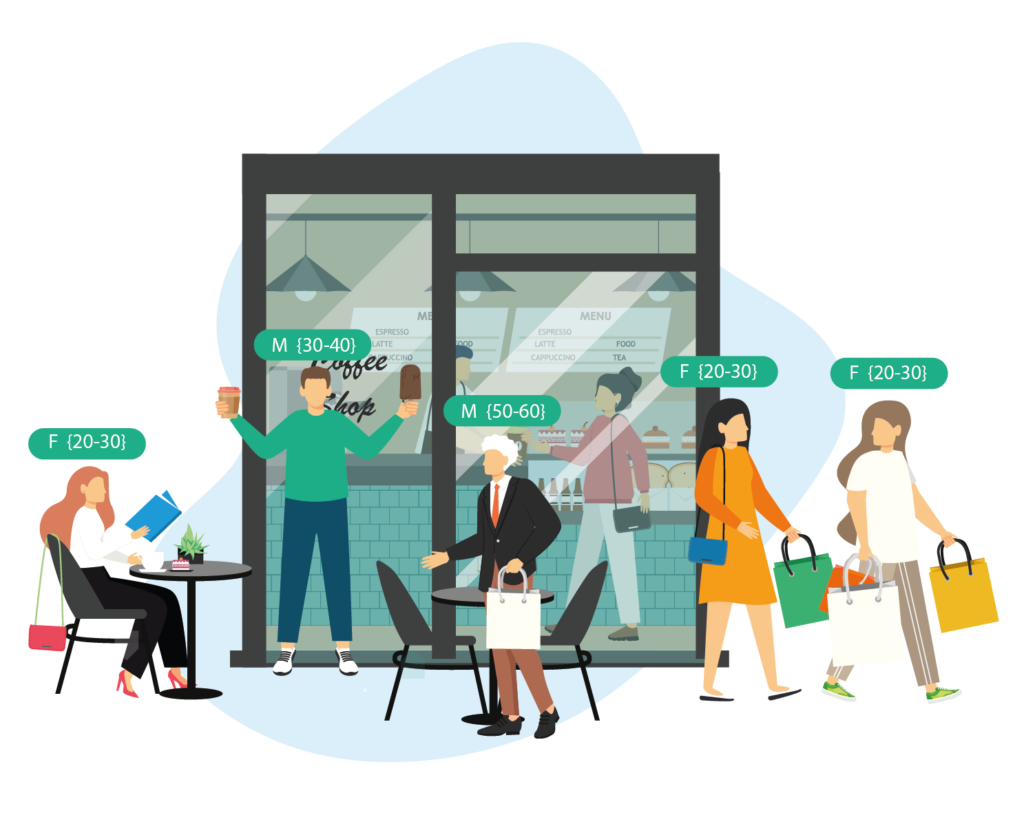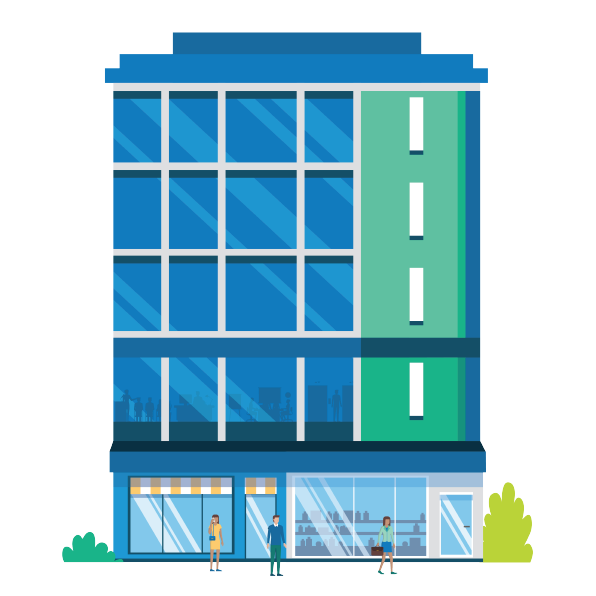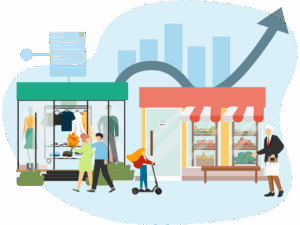The differences between geolocation tracking, Wi-Fi tracking and footfall monitoring explained
How to capture and use the most relevant information to maximise ROI for your store, shopping centre, retail park or high street.
The retail analytics landscape has changed considerably over the past year. Retailers and destinations are hungry for data that will enable them to make decisions to maximise their ROI during their post-pandemic recovery.
The question is what solution provides the most relevant information for retailers, centre managers and BID managers to make the right decisions? A fundamental part of retail analytics is capturing footfall and identifying patterns in consumer behaviour. However, there are many solutions in the marketplace that contribute this data and vary in levels of preciseness, granularity and accuracy.
Three key technologies are employed currently: geolocation tracking, Wi-Fi tracking and footfall monitoring. This post explains each and presents their respective benefits.
Geolocation and Wi-Fi Tracking
For some destinations, it’s key to understand where visitors have come from. Geolocation tracking plays a role in delivering this information. The data is harvested by scraping apps on mobiles. By gathering this macro–level data, the retailer, retail destination or high street gains a better understanding of the radius of travel in the local area. The information is also key if the destinations depend heavily on trade from international tourism.
Wi-Fi tracking sniffs out Wi-Fi enabled devices within the range of strategically located nodes, identifying MAC addresses on individual mobile devices. Notwithstanding privacy concerns and understanding accuracy limitations, Wi-Fi tracking continues to hold a place within the marketplace (for now) as it lets retailers and destinations understand the path of movement around a location. Destinations can get value from understanding the trends of customers who follow certain paths through a destination, retail store or even an external high street. However, the data provided is only as good as the audience and the compatible devices they carry – if they carry Wi-Fi enabled devices at all.
Geolocation and Wi-Fi tracking are non–visual based systems, and they capture data from devices as opposed to actual people. This means the count is of devices instead of individuals, so there is a risk of inaccurate data as many people tend to carry at least two devices, if not more (e.g. a smartphone and smartwatch). There is also a risk of data distortion as older consumers, who may be a key source of traffic to a destination or store, may not carry a Wi-Fi enabled device at all.
Both Geolocation and Wi-Fi tracking are solutions that depend on compatible devices having location services and Wi-Fi activated. If these are not enabled by the device owner, data will not be captured.
Footfall Monitoring
Footfall monitoring is a visual–based system, which uses AI technology to capture the volume of pedestrians, vehicles and bicycles within a field of view. A device is placed to view an area or zone to collect the volume of activity. It can also gather demographic data (gender, age and even sentiment) of individuals, although no personal information is gathered and the anonymity of individuals is guaranteed. As footfall counting provides a count of individual visitors rather than a count of devices, the data is far more precise and granular, with an accuracy level of over 98% being the norm.
Footfall counting gathers data on all visitors (whether they carry a Wi-Fi enabled device or not), ensuring the count fully represents the visitor population rather than what can either be a much smaller sample of visitors who carry devices, or a much larger sample of visitors who carry multiple devices.
MRI OnLocation for footfall analytics can use a client’s own CCTV hardware or MRI’s hardware to deploy a footfall monitoring solution. It is quick and easy to implement with zero disruption to operations, and drives greater granularity of data capture so retailers, centre managers and BID managers can make strategic decisions aimed at their core audience.
Privacy Implications
Recently, the power of privacy has been placed firmly in the hands of the consumer. There is now the ability to opt out of location and Wi-Fi tracking from personal devices as part of stricter privacy rules, further impacting the effectiveness of geolocation and Wi-Fi based tracking solutions.
Tech giants Google and Apple began sharing new rules and detailed guidance around their data practices in Q4 2021. The biggest change from Apple allows users to opt out of data tracking by apps, indicating the short shelf life presented by geolocation and Wi-Fi tracking solutions.
When considering a footfall monitoring solution, it is important to ensure no video is stored or transmitted away from the site for processing. MRI OnLocation ensures full anonymity by pixelating the video signal as it is processed for analytical purposes, fully meeting privacy regulations.
Tracking customers through geolocation and Wi-Fi only provides part of the picture, but these technologies can be complementary to footfall monitoring. MRI Software has a proven history in combining all technologies to provide the retailer, retail destination or high street with a comprehensive picture of the customer’s journey. With the ability to leverage the largest number of data points across the UK (and a rapidly growing number across the USA) to provide insights and benchmarking analysis, MRI Software remains one of the world’s leading retail analytics practitioners.
Key Features

Footfall Analytics
Boost performance with actionable insights based on AI-driven footfall analytics

MRI OnLocation UK Monthly Commentary – May 2025
UK retail footfall remains steady in May as half-term holiday boost offsets cautious consumer spend MRI Software’s latest retail footfall data for May revealed that retail footfall across the UK saw a marginal dip in May compared to last year.

